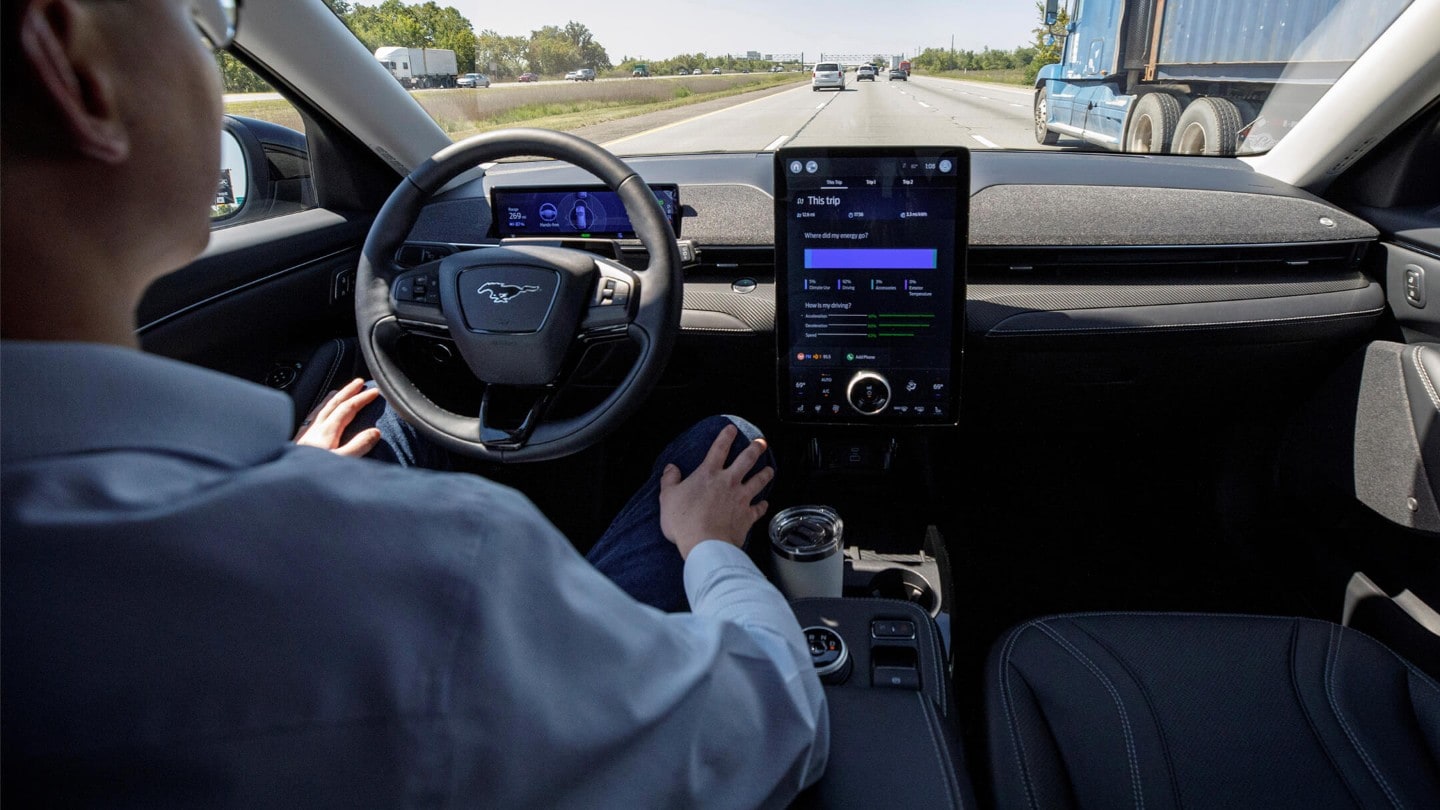Detroit automaker Ford announced on Thursday that it is expanding its advanced driver assistance system (ADAS) across several new models in Europe.
Named BlueCruise, the “hands-off, eyes-on” highway driving system was first introduced with the fully electric Mustang Mach-E SUV.
From the spring of 2026, the software will be available to owners of both hybrid and fully electric versions of the Ford Puma, and the plug-in hybrid Kuga and Ranger models.
According to the Detroit automaker, BlueCruise was “the first system of its kind to receive regulatory approval in Europe.”
The software was launched in the UK, where Ford is one the best-selling brands, in 2023.
The company’s ADAS has since been expanded to 16 other European countries, including France, Germany, the Netherlands, Denmark, Sweden, among others.
As of October 2025, the system was the “most widely available” in Europe, covering “more than 135,000 kilometers (84,226 miles) of designated highways.”
These highways, in which the software is supported, are called “Blue Zones” and allow customers to “take a road trip across multiple countries.”
Under EU’s New Vehicle General Safety Regulation (2019/2144), approved in July 2024, new cars sold in the bloc must now be equipped with several safety features included with advanced driver-assisted systems.
These include functions such as intelligent speed assist, emergency lane-keeping systems, autonomous emergency braking, and driver drowsiness/attention warnings.
These systems are currently Level 1 and Level 2 technologies, which correspond to driver assisted and partial automation systems under the SAE International Standard.
These include Tesla‘s Autopilot, a Level 1 system, and Ford‘s BlueCruise, which is Level 2.
Similarly, General Motors‘ Super Cruise ADAS is also available in the US, but it has not yet been released in Europe.
In October, the company filed to trademark the expression in the European Union, hinting at the upcoming launch.
Level 3 (conditional automation) and Level 4 (high automation) autonomous driving technologies have also been developed and deployed in Europe by Chinese companies such as WeRide and Pony.AI.
These systems are mainly used in public transportation and logistics and are not yet available for private consumer vehicles.
Last month, Volkswagen started public road testing of its first autonomous vehicles in Berlin, in a partnership with Berliner Verkehrsbetriebe (BVG), the city’s main public transport company.
Tesla has also been struggling with the release of Full-Self Driving (Supervised) in Europe, where it keeps reaffirming that the software is “awaiting regulatory approval,” despite being a L2 autonomy system.
Last week, speaking about the upcoming launch of the FSD in other parts of the globe, CEO Elon Musk once again urged owners to pressure safety regulators in the Old Continent.
“You can’t even get a super, even just normal supervised FSD is not allowed in Europe currently, which doesn’t make any sense,” the CEO stated.
As of Thursday, over 12,800 European customers have signed a petition on change.org for the approval of the software on the continent.
The company has successfully tested the software across several European cities over the past few months, documenting the rides on Tesla Europe’s X account.
Last week, during its European visit, Nio‘s founder and CEO William Li admitted that the electric vehicle maker cut its R&D investments in Europe, where regulation for certain features is tighter.
According to Li, the company’s low sales volume in Europe makes the investment very costly per unit.
“For the ADAS features, we need to consider not just the feature itself, but also the regulations and the validation requirements,” the chief executive noted.
“To be honest, validating an AD [autonomous driving] solution on 5,000 cars is as expensive as validating that on 800,000 cars,” Li said referring to the fleet size of Nio in China.
Ford disclosed its third quarter financial earnings on Thursday, beating Wall Street expectations by reporting a $50.5 billion revenue, compared to the estimated $43.9 billion.
Nearly two years after deliveries began, the Tesla Cybertruck saw US sales decline in the third quarter compared to the same period last year.
Ford’s shares fell more than 7% early Tuesday after reports of a fire at one of its suppliers raised concerns that the company could face supply chain disruptions lasting several months.
Jefferies upgraded Ford's stock rating from Underperform to a Hold rating on Monday, noting the Detroit automaker's shift in EV strategy in the upcoming months.
Founded in 2021
Home
About
Other brands
Contact
[email protected]
Follow












